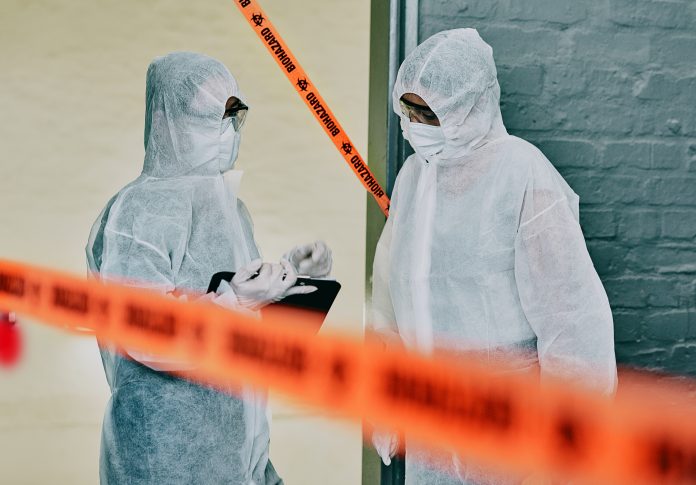Inquisitive, thorough, and multi-skilled professional investigators are a key weapon in a legal team’s arsenal after a client suffers a loss
Emily Kupers, forensics and business intelligence consultant at Gateley Omega, explains how investigators can help build legal cases and even recover what was stolen.
When assets are lost or stolen, untangling the complex web of data, and retrieving vital evidence, can often exceed a legal department’s area of expertise. This is where the professional investigators come in.
Investigators are not lawyers, but they are integral to developing a water-tight legal case.
The intelligence they gather can be crucial to not only identifying perpetrators and establishing evidence of a crime but also assessing the chances of, and options for, recovering stolen assets.
Asset loss and recovery are increasingly complex
Globalisation and digitalisation of asset streams – whether involving regular currency or crypto assets – have made it easier than ever to transfer items quickly and even anonymously outside of a jurisdiction. Furthermore, complicated networks of businesses, digital hosts, individuals, and other entities provide various routes in which to divide, dissipate, launder, or hide stolen assets before the victim is even aware of the loss.
Knowing what to do next from a legal perspective is rarely straightforward, particularly if the perpetrators are unknown. Numerous questions need to be answered before legal teams can develop a strategy, including the value, location and form of the assets stolen, as well as the methods used to steal them.
Legal teams can involve professional investigators from day one to complement their existing knowledge and develop carefully curated intelligence profiles on everything from the assets in question to the potential perpetrators and their proxies. This intelligence may not only lead to further lines of enquiry but also contribute to the evidence needed to pursue a civil or criminal case.
Investigators frequently work across several key sources, the first involving direct collaboration with the legal team. To streamline their enquiries, professional investigators need to understand all current facts about the incident and have access to all relevant materials, such as contact details, transaction data, or relevant communications.
The importance of Open-Source Intelligence
From here, an investigator can focus their research on areas that appear the most fruitful or suspect. While not above the law, professional investigators have sufficient skills and resources to exploit the available wealth of Open-Source Intelligence (OSINT). OSINT is any data available in the public domain and, therefore, legally obtainable. A surprising variety of data exists in this sphere, including public government data, news reports, social media accounts, images, videos, metadata, vehicle tracking, and grey literature – that is, white papers, reports, or evaluations. Once the notes are separated from the noise, they play a tune that can be used to augment an existing line of enquiry or develop a new one.
When investigating an entrepreneur operating in the student housing industry via public record research, we compared all financial statements to find attachable assets. The investigation started with an assumption of a value of over £30m in net assets for the entrepreneur, based on the market value of the properties. After investigating all statements and corporate structures, however, our conclusion was that all properties had encumbrances, and cash was siphoned off the entities. The legal team decided to not start a claim against the entrepreneur due to limited chances of recovery.
OSINT is frequently complemented by HUMINT (Human Intelligence), the process of gathering real-life information and intelligence. Even in a digital world, offline transactions are still common, particularly for those wishing to avoid leaving a digital trail. The sale of real estate, for example, is a common method of dissipating or laundering stolen assets. To hide this, perpetrators may avoid advertising the property online, but that does not mean it cannot be found elsewhere – say, the shop window of a local estate agent.
HUMINT can involve many investigative techniques, such as site visits, observations, and even informal discussions, all of which – properly documented – add to the evidence that a legal team requires. In fact, it is often advisable to conduct investigator-led discussions in the first instance for most investigations, as leads are likely to be less defensive or intimidated.
Working collaboratively and mapping assets
A professional investigator can be introduced at any point during the preparation of a legal case, but it is best to do so as early as possible, budget permitting. Working collaboratively with an investigator from the very beginning is mutually beneficial for both parties, not least because it establishes a two-way line of communication early on and makes areas of enquiry more efficient.
Prior to launching a case, legal teams can instruct investigators to map assets. This technique assesses the complexity and jurisdiction of an adversary’s assets – both those belonging to them and those that they have allegedly stolen. As the case goes on, legal teams and investigators can use these maps to identify assets at a higher risk of dissipation and gather evidence where relevant. Post-judgment, any payments or penalties can be enforced with the help of an investigator by hitting the perpetrator where it hurts.
In other words, an investigator can help identify assets, activities or transactions that can be disrupted or frozen until compensations have been made.
As such, an investigator’s role supports – not just the collation of vital evidence and the tracing of stolen assets – but also the intelligence and leverage required to obtain freezing orders, disrupt business for an adversary and, where necessary, bring them to the table for settlement.
Combining investigative and legal professionals
The roles of both investigative and legal professionals are becoming more challenging, particularly as commercial relationships evolve post-pandemic.
Global networks are becoming increasingly complex, and new methods for illicitly obtaining, moving and disposing of assets are devised every few months. The continuing existence of offshore or secrecy jurisdictions does not make research easier. Working together, however, lawyers and professional investigators can combine their unique skills and capabilities to find perpetrators, their assets, and any leverage and bring them to justice. Whether legal teams are looking to conduct due diligence, comply with anti-money laundering regulations, or profile future business associates, the professional investigator should always take pride of place in any lawyer’s contacts list.
For more information on Gateley Omega, please visit: https://gateleyplc.com/gateley-omega/
This piece was written and provided by Emily Kupers, forensics and business intelligence consultant at Gateley Omega.











